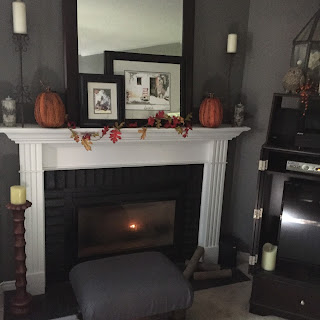When selecting a countertop for our kitchens or baths we can become overwhelmed by the selections available and which work best for us individually. If you want low maintenance you would not go for marble. For the low maintenance crowd, quartz is one of the best products available.
Solid Surface
The generic term, ‘solid surface’ refers to any material
that is solid all the way through. This means it doesn’t have a topcoat that is
different from the centre core. Solid surface materials are consistent in
colour and content throughout. The advantage of this can be durability,
hardness, temperature dispersion and edge profile options. Marble, Quartz,
Granite and Corian (or similar materials like Gibraltar or Zodiac) are all
considered Solid surfaces.
Plastic Laminate
Plastic Laminate is a thin plastic sheet moulded around a
particleboard centre with a few options for edge detail. This is not a solid
surface material. Although not loved by designers, real estate agents or
homeowners alike, laminate can be a practical and inexpensive solution in
certain spaces. Also, laminate companies continuously coming out with new colours colours
and options. This is the most
affordable option.
Corian
Corian is a man-made resin product that comes in multiple
colours. Corian is well known for its integrated sinks and seamless joints.
Less glossy than quartz or natural stones, it has a softer look and feel. An
advantage to Corian is that it can have adjustments made to it such as
extending a counter top without removing the top or creating seams. Corian is
an easy to maintain pliable material with a premium price tag!
Marble
As beautiful as Marble is, one must be careful when selecting it. It stains very easily so in a bathroom it can become damaged by some of the chemicals used. When used on a kitchen countertop it requires maintenance but as it ages, it is beautiful. If you want the look but not the maintenance, think about using it for your backsplash. The reason
being, it can be very sensitive to wine stains or de-glossing from lemons,
tomatoes or vinegar. A matte or leathered-finish marble can be slightly more
forgiving, but it’s only for customers who can handle the natural marking that
will occur. If you can’t handle this, choose something else!! Marble is expensive, beautiful but sensitive!!
Granite
Granite is a different natural stone than marble, in the
fact that it is impervious to wine, acidic food and most scratches & wear
and tear. (Hence tombstones are now granite and no longer marble!). Granite
has more of a pebbled pattern and less veins than marble. .
Quartz
Quartz is the generic term used to describe a man-made
material formulated from the quartz found in granite and then recast in resin.
It is very hard, non-porous, scratch resistant and nice looking. It is softer
in pattern than granite, but it is not as reliable for heat dispersion. You may
want to stay away from quartz around fireplaces and try not to rest hot pots on
it. Quartz is a good choice if you want a variety of colours or lots of
companies to choose from. It costs about the same as granite.
Soapstone
Soapstone is new to the solid surface lineup, although it’s
been around for a long time. It is naturally heat resistant and easy to
maintain. You can have integrated sinks, with soapstone, included within the
counter top. It is less glossy than marble or granite and offers a variety of
pattern, but always in a dark tone. It is an excellent material for dispersing
heat so it’s perfect around fireplace openings or in high-wear kitchens.
Soapstone is the same in cost as high-grade granite.
Quartzite
Often confused with the name quartz, quartzite is a natural
stone that has the durability of granite, but the veining pattern of marble. It
is a delicate material during manufacture, so it requires a good fabricator.
Once it is installed, it performs well. Slabs generally have soft wave patterns
in a full range of largely neutral colours. You can expect premium pricing with
Quartzite.
Butcherblock
Butcherblock countertops are a breed of countertop all by themselves. They offer the aesthetic warmth that the look of wood provides while at the same time providing a versatile work surface in the kitchen. They bring a distinctive look that's appropriate in a kitchen that's hard at work or "dressed up" for entertaining.
Deciding whether it's the right choice for your kitchen takes an understanding of just what a butcherblock countertop is, how it's made and how you're going to use it.
Remember that butcherblock counters that you will cut and prepare food on will need frequent cleaning and oiling. If you're someone who just isn't up for this level of maintenance, consider getting "non-working" butcherblock countertops and use a separate cutting board for the food preparation. If you neglect the cutting board, you can just toss it out. That's harder to do (and more expensive) when you've neglected your countertops.
Concrete
The decision about installing a concrete countertop versus granite, marble, corian or laminate can be a difficult one. When thinking about this keep in mind you will need the correct cabinetry infrastructure to handle the weight so putting concrete on 30 year old cabinets may not be the best idea. Concrete is both beautiful and budget-friendly. If properly installed and sealed, concrete countertops will last practically forever. Colncrete works well in a modern or industrial looking kitchen. Concrete is a poreous material and will absorbe liquids and stain. Acidic substances will etch the concrete and cooking oils can leave dark stains. Applying a sealer to the surface will lessen the chances of damage.



















